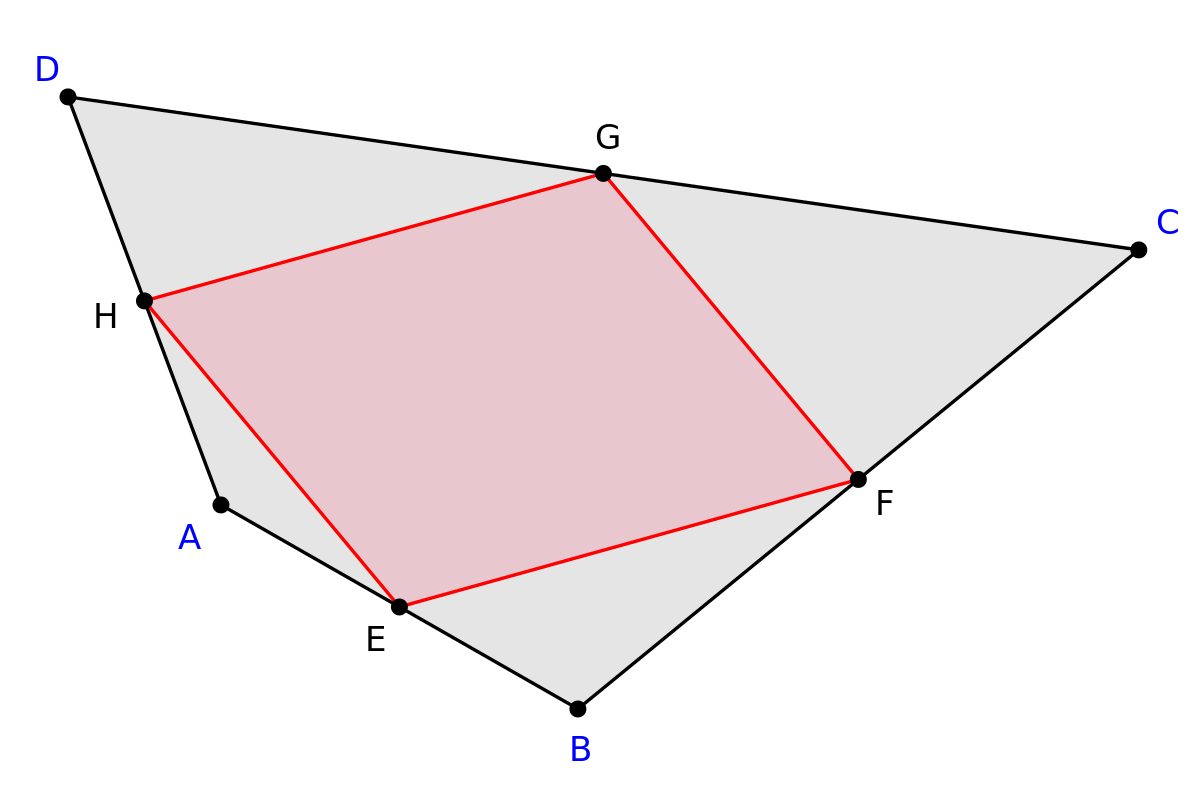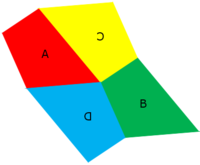I have been tackling this geometry question for some time now, but I can't seem to figure anything out. The question is:
"Prove that each convex quadrilateral can be cut into four parts, so that a parallelogram can be drawn from these parts.
I have tried cutting through diagonals, midpoints etc., but I can't seem to get a parallelogram.
If anyone has any ideas, I would really appreciate your help.
Thank you!
"Prove that each convex quadrilateral can be cut into four parts, so that a parallelogram can be drawn from these parts.
I have tried cutting through diagonals, midpoints etc., but I can't seem to get a parallelogram.
If anyone has any ideas, I would really appreciate your help.
Thank you!


